Taking the Long Road: Pilgrimage Routes of Japan
Letters from Japan, April 2024: a trip to Australia, and the pilgrimage routes of Japan.
Good morning,
It is a warm day in Tokyo. We are in that sweet spot when it already feels summery but without the humidity. It's the kind of weather that makes one want to take another stroll around the block before stepping into the office or returning home, extending the enjoyment.
After toying with the hearts of all 120 million residents by deciding to show up unusually late and driving the Japan Meteorological Agency crazy (which had to update its Sakura forecast almost daily), the beloved Sakura is already gone. Fortunately, there are other reasons to feel joyful, such as the Golden Week—one of the country's most cherished holiday periods—where multiple national holidays are celebrated in the same week.
Despite the infamously rigid work culture, Japan has a surprisingly high number of national holidays—16 annually. Mountains, marine, sports, culture, constitution, elderly, environment, and children each get their own holiday and share it with the whole country (thank you).
So, thanks to the environment, constitution, children, and a former emperor, our office will be closed for ten days starting this evening. My bags are packed, and tickets have long been bought for a trip to Australia, where I will hike the Great Ocean Walk trail—the 110-km-long hiking route that, through the coast, follows the Great Ocean Road, one of the world’s most scenic driving routes with the ocean on one side and the lush forests on the other.1 Hopefully, the kangaroos and koalas will be my trail companions, while the snakes keep to themselves (fingers crossed).
I already visited the Great Ocean Road in 2017 but did not have a chance to go hiking then. So, I am looking forward to this multi-day hike that will, for a change, take me through the coast instead of the mountains. The trail is officially divided into eight sections, each to be covered in a day (with plenty of rest time). But many people complete it in six to seven days. It is not a particularly difficult or technical trail but a long one. I will try to tackle it in four to five days to spend some time in one of my favorite cities in the world, Sydney, before I fly back to Tokyo.
So, the May edition of Letters from Japan may be less about Japan and more about Australia and the Great Ocean Walk. But to honor the name of this newsletter and the underlying promise, I will use this April edition to introduce you to some of the multi-day hiking trails in Japan. Then, I will kindly seek your permission to make an exception and write about Australia in the next one.
Mountains and multi-day trails of Japan
Mountains cover 70% of Japan’s land. As a result, the country is home to thousands of hiking trails, including many multi-day ones. Japan's mountains not only bring happiness to many hikers and skiers but also play a central role in numerous religious, social, and cultural rituals dating back thousands of years. These rituals establish strong connections between certain segments of society and the mountains—connections so strong that they sometimes lead to courtroom drama.
Who owns Mount Fuji? Ask the court.
When I first heard that the iconic Mount Fuji, Japan’s tallest mountain, is privately owned, I was as shocked as any person hailing from a country where nature assets automatically qualify as public assets and, thus, can only be owned and controlled by the government, would be.2
Sengen Grand Shrine, located in Shizuoka Prefecture, owns the upper section of Mount Fuji, covering the area from 3,250 meters up to its peak at 3,776 meters. What is even more surprising is that, in a country where litigation is considered the ultimate last resort (unlike my country, where everyone sues each other), the shrine went as far as suing the government to reclaim its ownership of the land and obtained a court decision declaring its ownership of the top section of Mount Fuji in 1974. While the shrine`s ownership right is legally based on the Constitution of 1949 and the new regime that it implemented, Sengen Grand Shrine’s claim to the ownership of Japan`s most beloved mountain mainly derives from the spiritual importance of the mountain for the shrine.
What the mountains of Japan have to offer
While all the background drama, litigation, and spiritual importance add to the allure of Japanese mountains, one could also certainly argue that the landscape beauty offered by Japanese mountains cannot compete with what countries like New Zealand, Norway, or Switzerland have to offer—otherworldly scenery powerful enough to inspire one to be a more decent human being. However, what Japan lacks in terms of awe-inspiring and life-altering scenery (so sorry, but forget about climbing Mount Fuji and walking down as a more decent human being), it makes up for not only in exciting drama but also in a unique hiking experience that showcases a perfect harmony between people, nature, and, in some cases, religions. Most of the country's multi-day trails will fulfill one's desire for cultural interaction and outdoor adventure equally.
Some of these trails are more than a thousand years old, and hikers follow in the footsteps of religious pilgrims who once risked their lives to visit sacred sites. There are also some recently developed trails, such as the 1000-km long Michinoku Coastal Trail in Tohoku, which was built to celebrate the revival of a region that has been hit by one of the deadliest natural disasters of the century.
While I visited some sights along the Michinoku Trail in 2022 during a trip planned by the Japan Reconstruction Agency, I have yet to hike any of its sections. So, I will focus on the three trails that I have personally experienced.
Kumano Kodo: ancient pilgrimage routes
Kumano Kodo is one of the best-known multi-day pilgrimage destinations in Japan, owing part of its fame to its inscription as a UNESCO World Heritage in 2004 and becoming, along with Camino de Santiago, one of the only two pilgrimage routes in the world having such recognition.
Kumano Kodo is the name given to a network of five pilgrimage trails—Nakahechi, Kohechi, Iseji, Oheji, and Omine Okugake—that have been used for over a thousand years, connecting sacred sites in the Kii Peninsula.
These ancient trails connect the three sacred sites: Hongu Taisha, Nachi Taisha, and Hayatama Taisha. Collectively known as “Kumano Sanzan,” these are the ancient Kumano religion's three grand shrines and holiest sites. The trails of Kumano Kodo also extend to Koyasan, the capital of Shingon Buddhism in Japan; Ise-ji Shrine, the most important Shinto shrine in Japan; and Yoshino and Omine, the centers of mountain worship - Shugendo.
With all this historical, cultural, and religious background, UNESCO refers to the Kumano region as a cultural landscape, a concept defined as "[places] where human interaction with natural systems has, over a long period, formed a distinctive landscape."
Nakahechi Route
Once reserved for the emperors and nobles and therefore also known as the Imperial Route, the most popular Kumano Kodo trail is the Nakahechi Route. The trail starts in Tanabe and traverses the Kii Peninsula towards the three sacred sites of Kumano Sanzan.
While the official trail begins at Tanabe, most people, including myself, start their hike at Takijiri Oji— an infamous section that first punishes you with a grueling two to three hours climb and then rewards you with a stay at one of the finest accommodations along the entire Kumano Kodo route - Kiri no Sato Takahara, where each room comes with uninterrupted views of the surrounding mountain range, which looks exceptionally mystical in the morning.
The Nakahechi, which ends at Nachi Falls, Japan’s tallest waterfall, is completed in five days. The trail has many diverse highlights that keep the walk interesting every single day. One popular stop is the Yunomine Onsen town, known to be Japan’s oldest hot spring town and home to UNESCO Heritage Tsuboyu.
Among all Kumano Kodo trails, Nakahechi is the most well-served one in terms of tourism infrastructure. Thanks to a community effort, you can book your accommodation, arrange luggage transportation, and even book a guide using a single and easy-to-use website (a rare comfort in Japan): https://www.kumano-travel.com/en
While the Kumano Travel website offers all the information you need - if you are looking for a much less helpful but more personal read, you can also check out my Nakahechi post: Walking Kumano Kodo.
Iseji Route
Known as the Eastern Route, or the route for the "ordinary people" of the time, the Iseji Route is another Kumano Kodo trail I had a chance to experience.
The route starts at Japan's most important shrine, the Ise Shrine, and follows fishing villages and beautiful mountain passes all the way down to Hayatama Taisha.
The 170 km trail is commonly completed in 10 to 14 days. While the Nakahechi Route mainly passes through the mountains, the Ise-ji Route offers a mixture of mountain passes, including sections such as Magose Pass (referred to as one of the most scenic sections of the entire Kumano Kodo), road walking, and fishing villages.
I hiked the Nakahechi Route before I moved to Japan, and it was my first time hiking a multi-day trail, so it was a memorable experience. However, by the time I hiked the Ise-ji Route, I was already living in Japan. While the trail offered fewer shockingly scenic moments, I reminisce about it as an emotionally more engaging experience than the Nakahechi.
Possibly because, as a resident, I at the time had already developed a higher level of affection for the country and its kind people, which led me to feel more emotionally invested in every experience along the way. It was also my first time sharing a trail—by pure coincidence—with the mountain monks of Japan—yamabushi—an encounter so unexpected that it almost brought tears of joy to my eyes.3
But whichever route you take, Nakahechi or Iseji or any of the other three, Kumano Kodo is an undisputedly rewarding experience.
If you are interested in exploring the Ise-ji Route, I will refer you to this website for a very comprehensive Iseji Route diary/guide, and to my Iseji post for a much less helpful personal diary.
88 Temples of Shikoku
While not listed as a UNESCO Heritage, another pilgrimage route of Japan, which is as famous as Kumano Kodo, is the 1,200-km long Shikoku 88-Temples Pilgrimage Route.
The route covers 88 Buddhist temples, all spread out to four prefectures of Shikoku, one of Japan's most isolated and rural main islands. Most people finish the whole route in six to eight weeks.
Given the time and physical strength that the trail requires, in addition to those who cover the distance entirely on foot, there are also many people who make the pilgrimage on a bus tour, with their own car, by bike, or by walking a section each holiday and finishing the whole route in a few years instead of weeks. These are all acceptable forms, and the wonderful Shikoku community, who deserve all the praise and recognition for their endless generosity/hospitality and efforts to upkeep the route, welcomes all pilgrims, referred to as “henro” (遍路), regardless of the mode of transportation and religion.
The history of the Shikoku Pilgrimage Route goes back to Shikoku-born monk Kobo Daishi, also known as Kukai, who founded Shingon Buddhism in Japan in the 8th century. The route includes many sites associated with Kukai, like Mikurodo Cave, where it is believed that Kukai spent time training and meditating.
Even though, contrary to common belief and according to numerous sources, Daishi had not built or even visited all 88 temples, the Shikoku Pilgrimage is still closely linked with the teachings and the spirit of Kobo Daishi. Today, Kobo Daishi is enshrined in the temple inside the beautiful and strangely serene Okunoin Cemetery, tucked deep in the forests of Koyasan in Wakayama Prefecture. Thus, after visiting 88 temples of Shikoku, many pilgrims conclude their journey in Koyasan by visiting Kukai’s mausoleum.
While I have not yet walked the entire route, I visited Shikoku many times—once for a two-week trip to walk some specific sections of the trail in Tokushima and Kochi prefectures and once for a stay in a temple where my friend’s father was the head priest—an opportunity and experience that I am eternally grateful for.
While I envy those who had a chance and time to do the whole walk and would love to do it someday - I would still encourage you to visit Shikoku even if you are short on time. For me, the most memorable part of the Shikoku experience was spending time in tiny fishing villages along the coast and experiencing the community spirit that is still very much alive in this isolated island of Japan, which, unfortunately, suffers immensely from the issue of de-population.4 In all my travels in Japan, nowhere came close to Shikoku in terms of opening the door to the rural side of Japan and fostering, hopefully, a little deeper understanding of the country.
As always, thank you for being here. I say it each time and will say it again: It truly means a lot—more than you know. I will be back next month (unless the snakes of Australia get me) to report from the Great Ocean Walk.
The road is also the largest war memorial in the world and was built by the returned soldiers in honor of those who lost their lives during World War I. Anzac Army, composed of Australian and New Zealander soldiers, fought in Gallipoli in Turkey (aka my country) against the then Ottoman Empire army. Many Australians and New Zealanders visit Turkey annually in April on Anzac Day (April 25th).
I have since learned that one of my co-workers' families owns a mountain range on the Noto Peninsula.
For more about the yamabushi culture, I will refer you to the newsletter of fellow Substacker and Japan resident Tim, a New Zealand-born yamabushi: Mountains of Wisdom.
Despite all the beauty and heart-warming experiences, Shikoku was also the first place where I brutally and shockingly faced the reality of depopulation in rural parts of Japan and what “ghost towns” actually look and feel like.

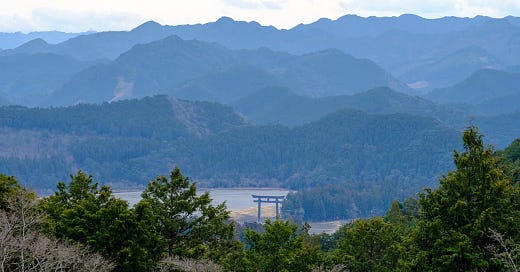




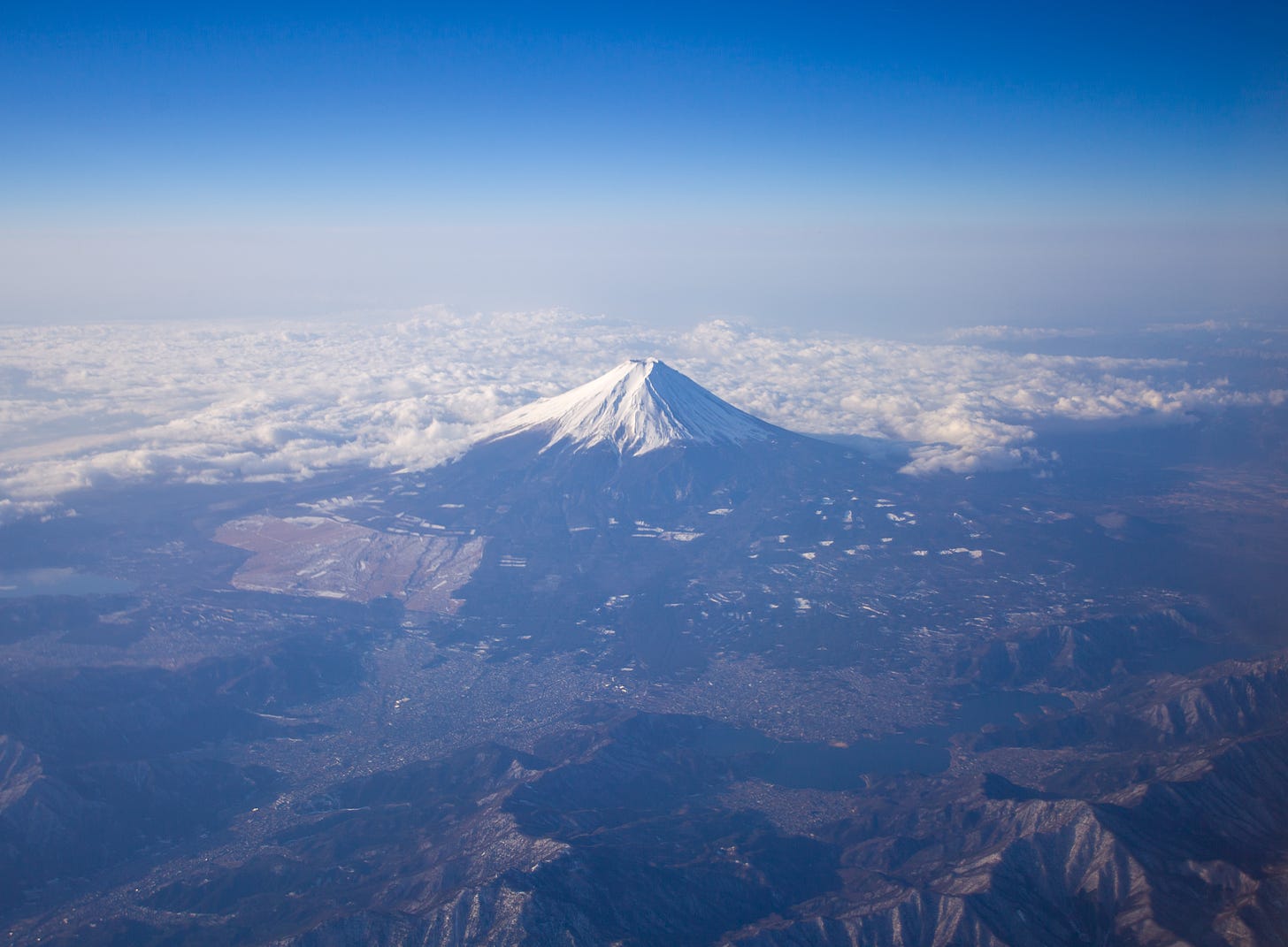
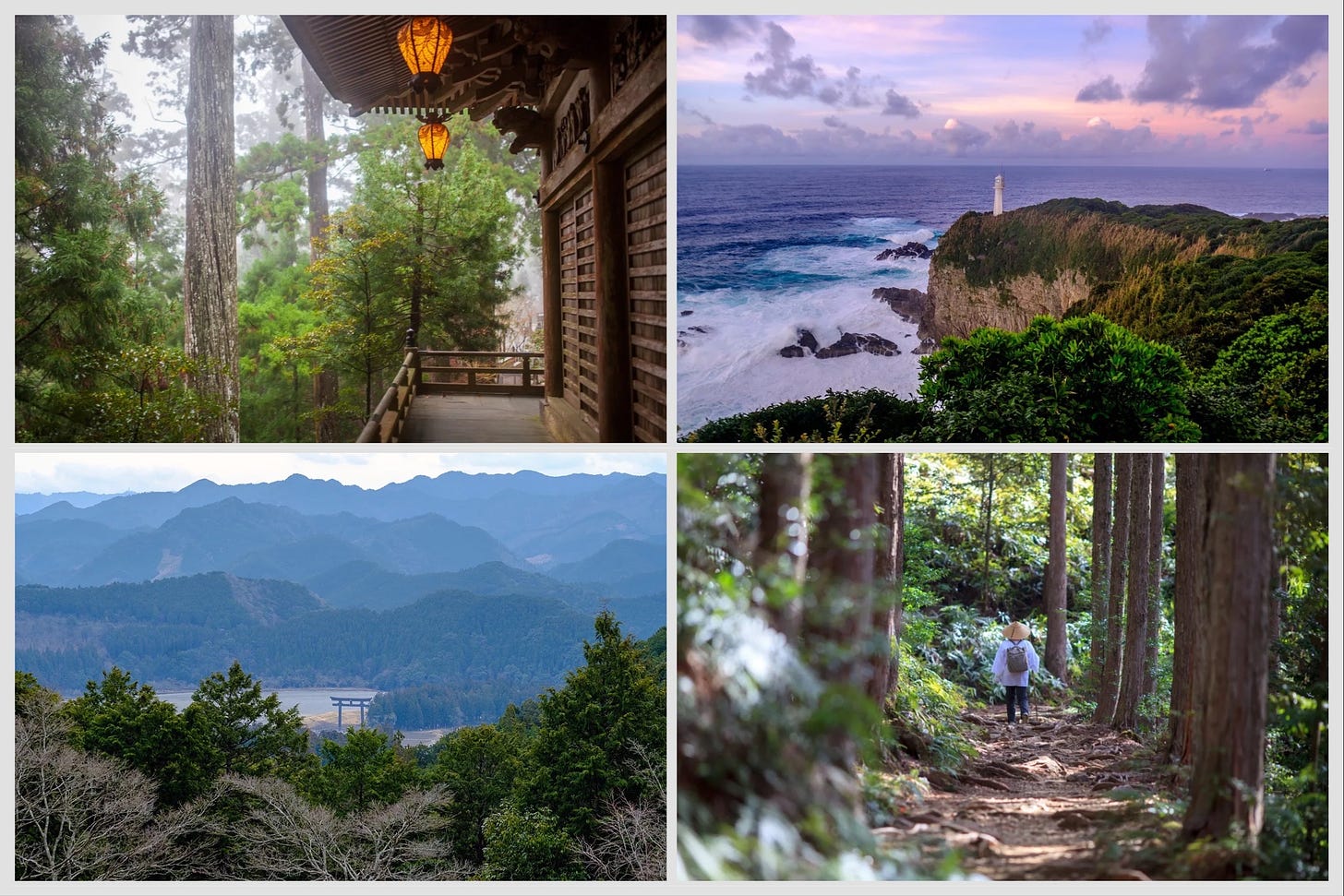

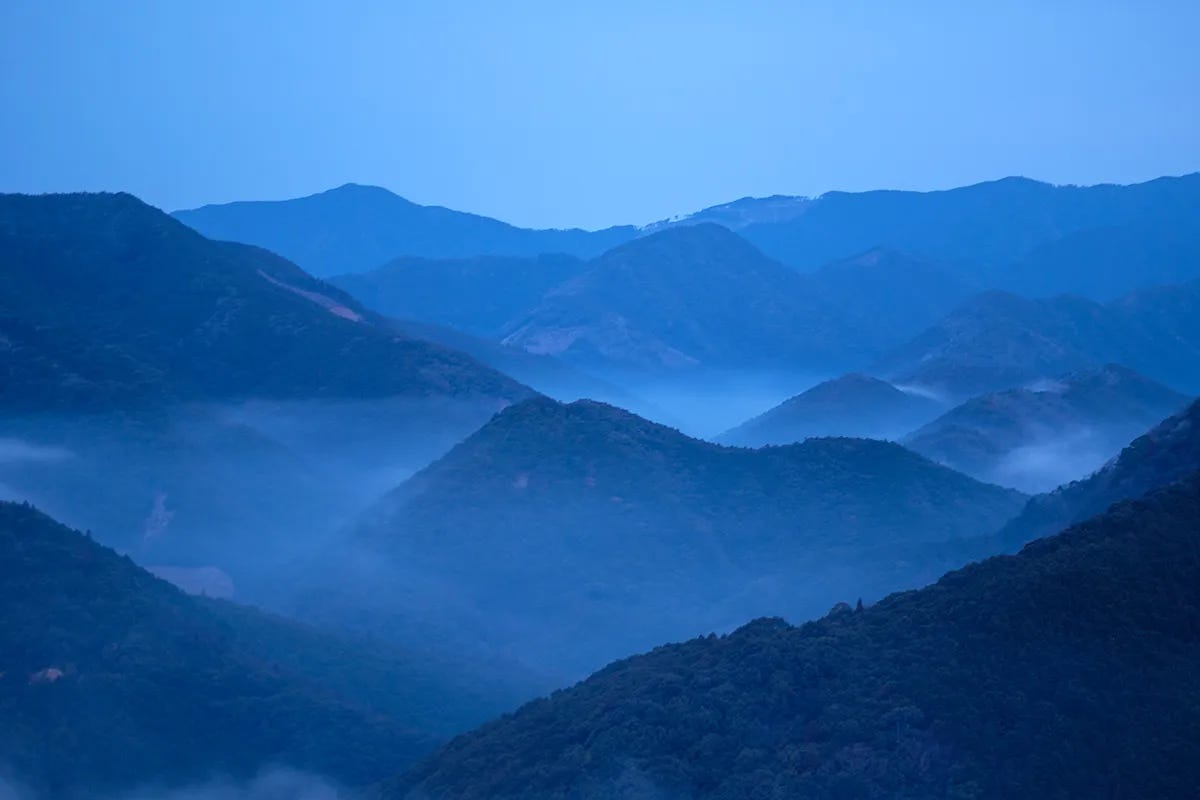
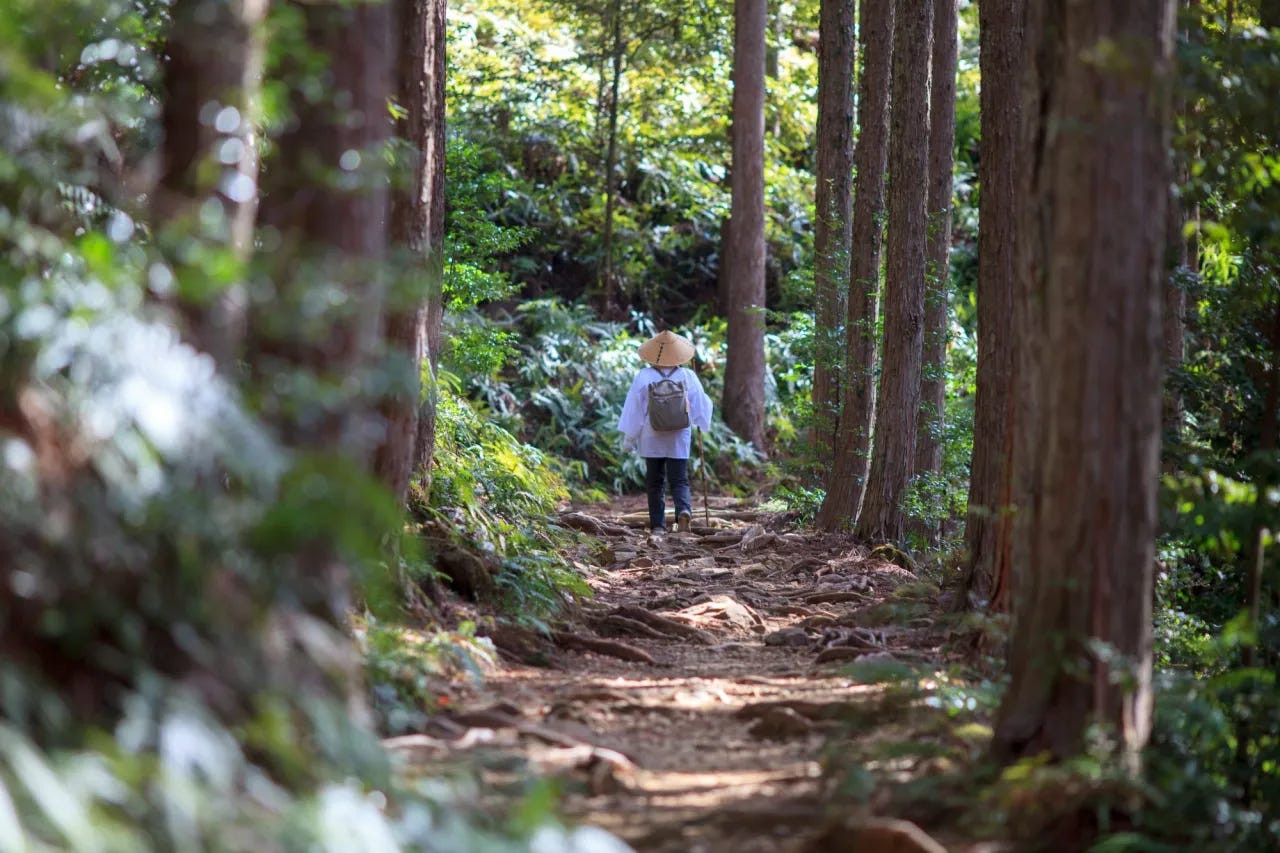
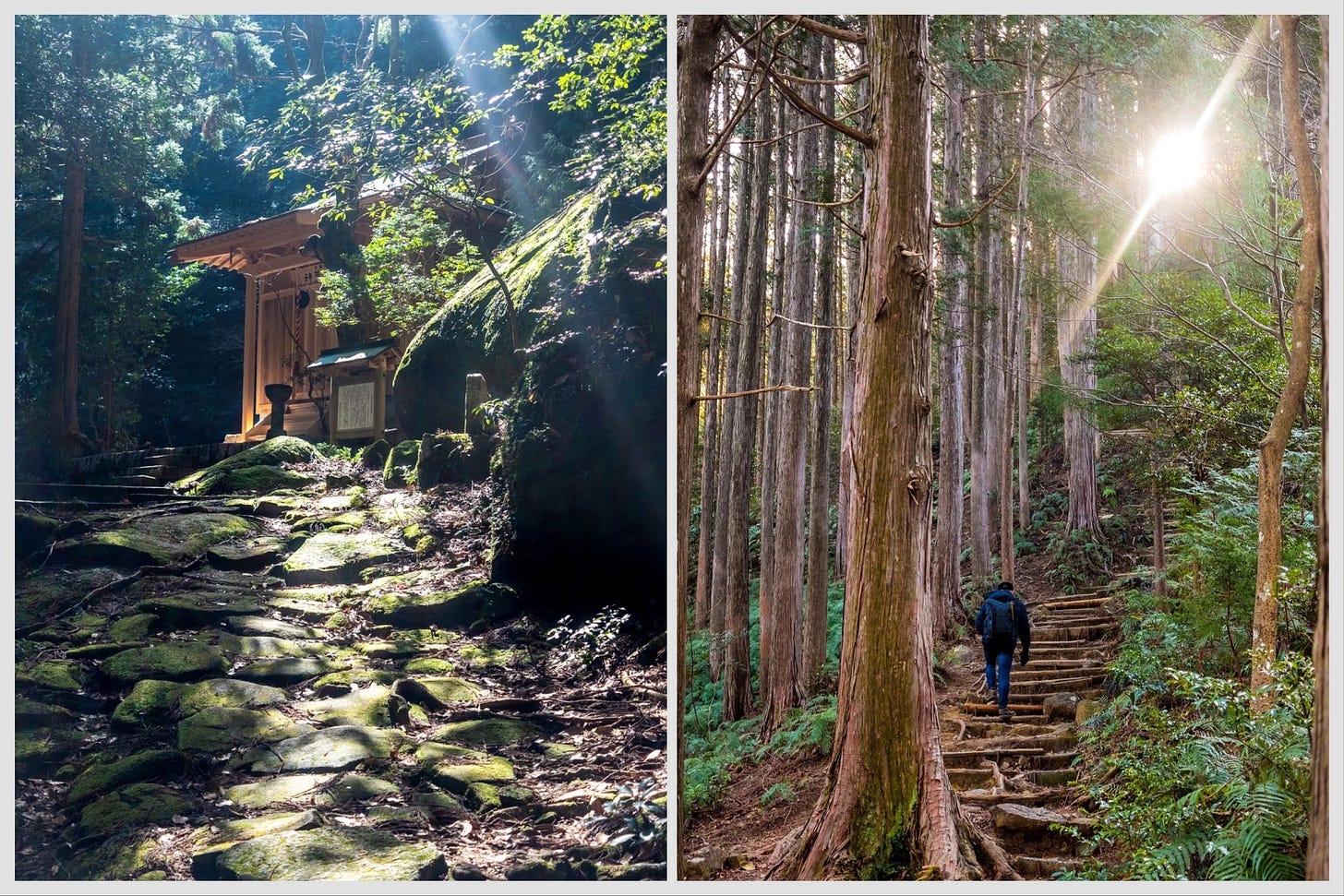
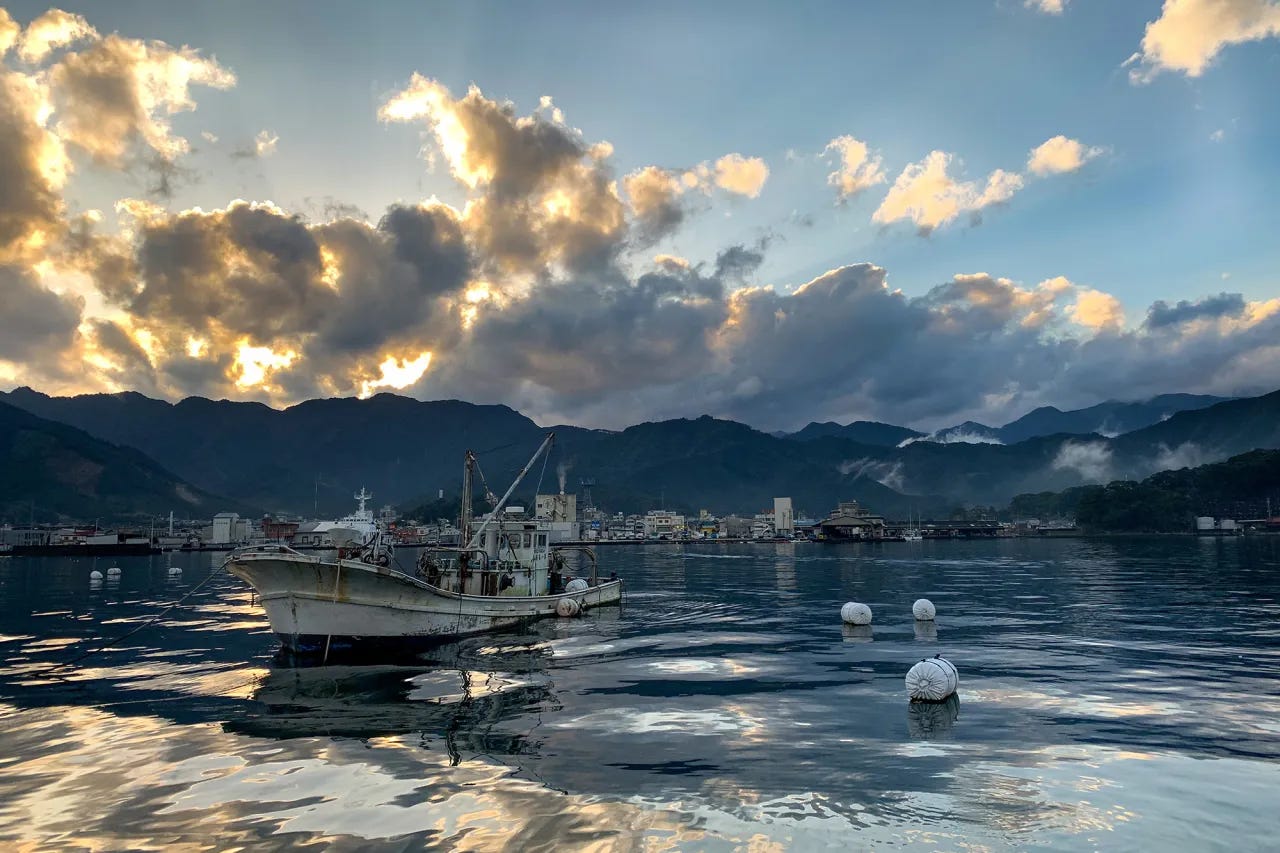
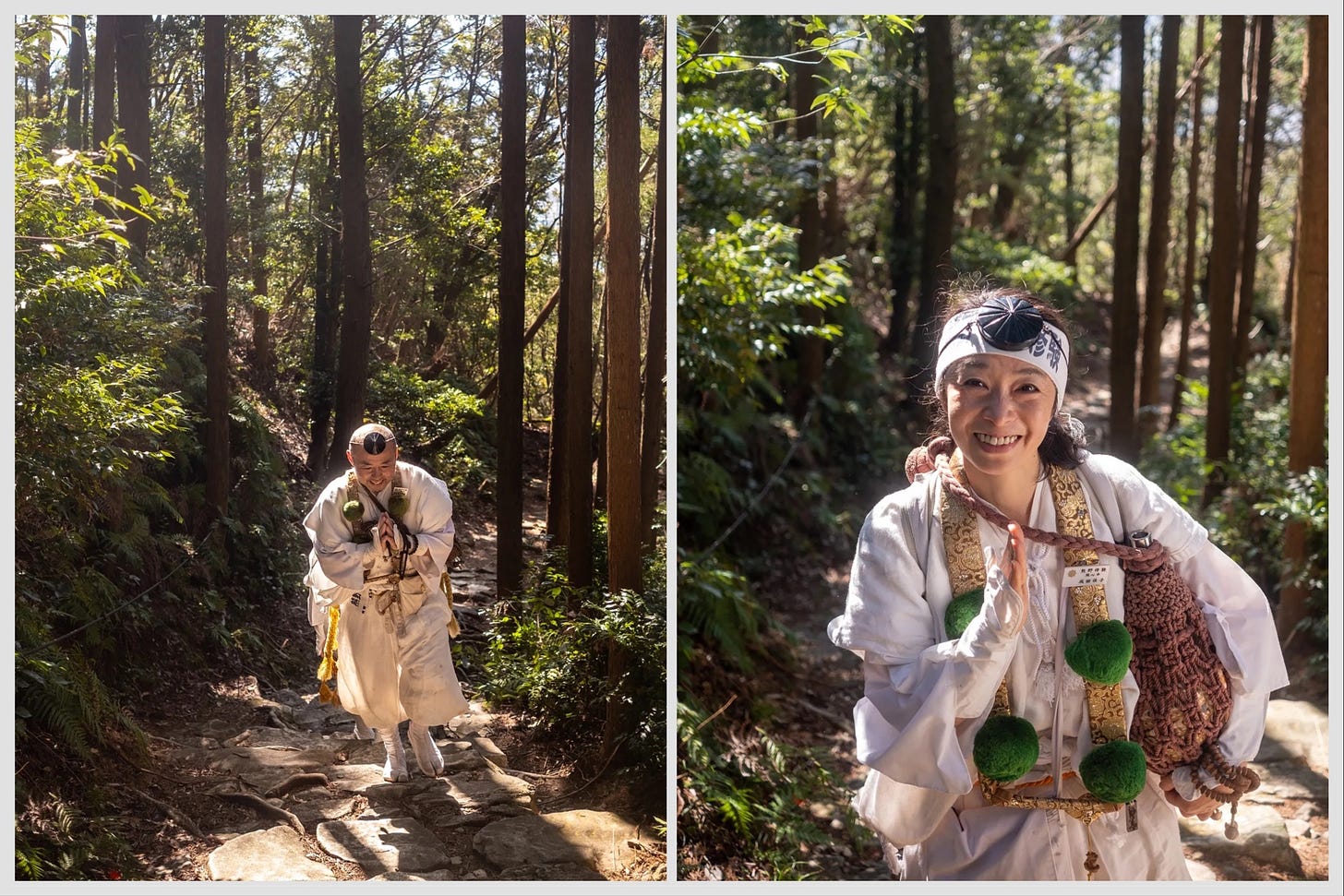
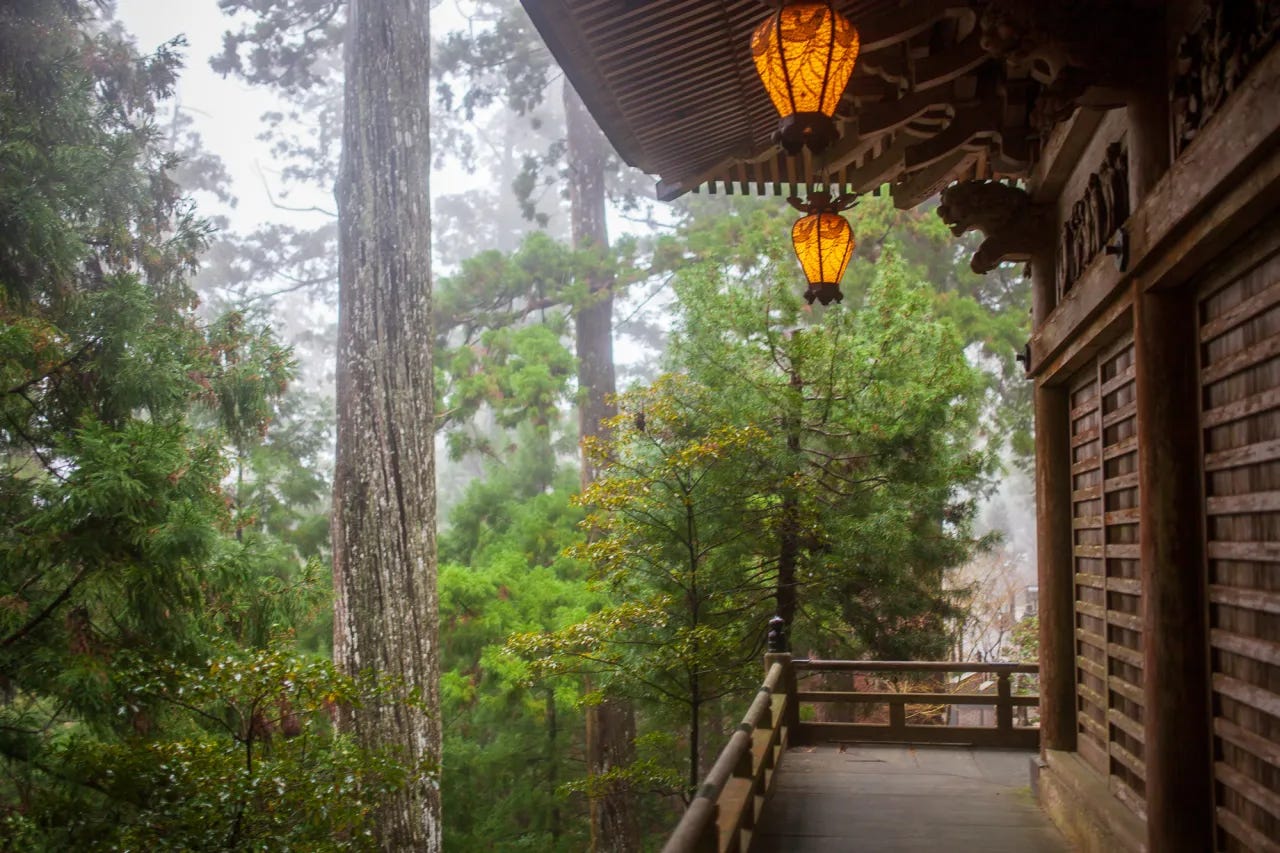


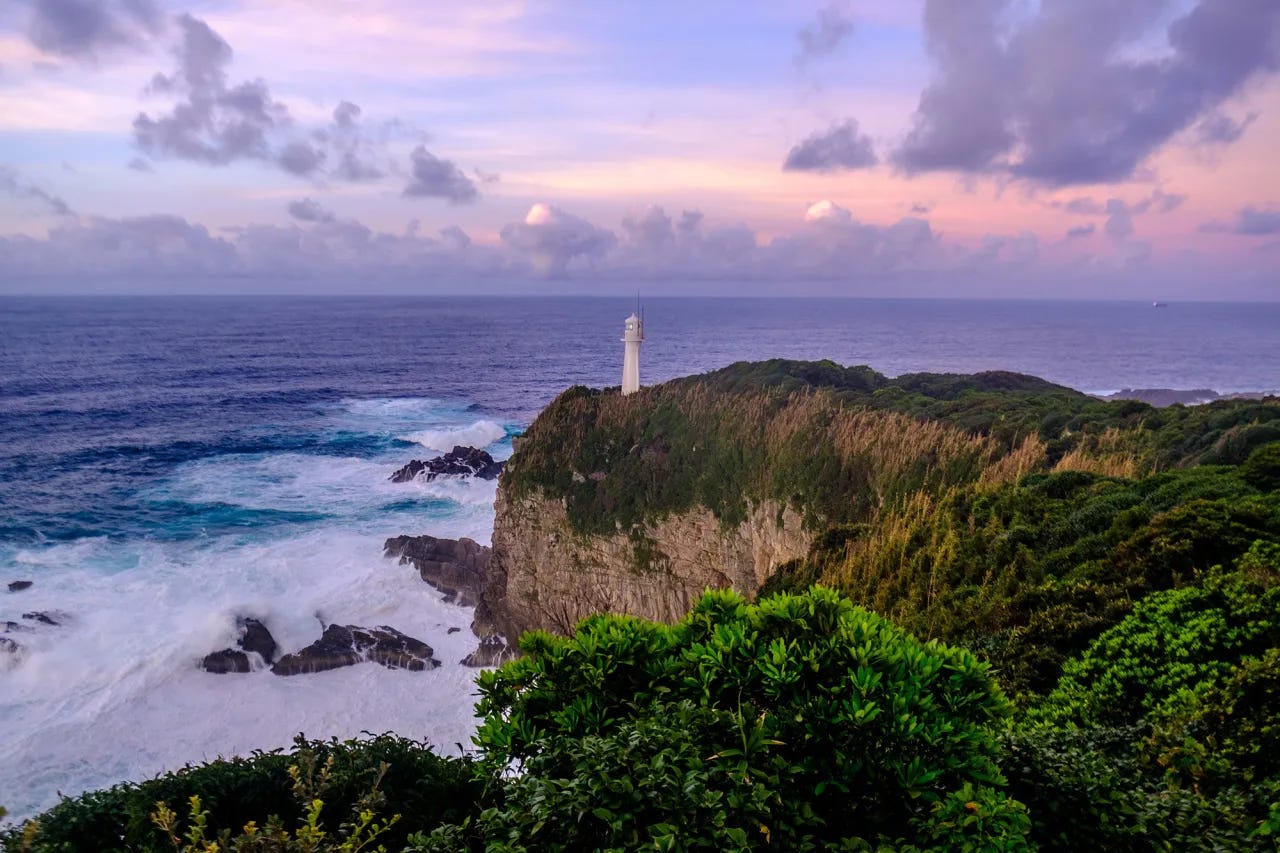
Wow this was awesome. Mount Hasa in particular looks amazing. I've only been to Tokyo and Mt. Fuji, but I would love to go back to Japan and spend more time in nature. Thanks for sharing!
So very informative and inspiring. We are doing a small part of the Tokaido trail in September. Next clearly must be a visit to Shikoku. Enjoy your walk!